


 الفيزياء الكلاسيكية
الفيزياء الكلاسيكية
 الكهربائية والمغناطيسية
الكهربائية والمغناطيسية
 علم البصريات
علم البصريات
 الفيزياء الحديثة
الفيزياء الحديثة
 النظرية النسبية
النظرية النسبية
 الفيزياء النووية
الفيزياء النووية
 فيزياء الحالة الصلبة
فيزياء الحالة الصلبة
 الليزر
الليزر
 علم الفلك
علم الفلك
 المجموعة الشمسية
المجموعة الشمسية
 الطاقة البديلة
الطاقة البديلة
 الفيزياء والعلوم الأخرى
الفيزياء والعلوم الأخرى
 مواضيع عامة في الفيزياء
مواضيع عامة في الفيزياء|
Read More
Date: 3-5-2017
Date: 14-8-2020
Date: 28-8-2020
|
Diffraction
When an electromagnetic wave passes by an obstacle in space, the wave is bent around the object. This phenomenon is known as diffraction. The effects of diffraction are usually very small, so we seldom notice it.
However, you can easily see the effect of diffraction for yourself. All you need is a source of light, such as a fluorescent or incandescent light bulb. Hold two fingers about 10 cm in front of one eye and make the space between your fingers very small, about 1 mm. Now look through the space between your fingers at the light source. With a little adjustment of the spacing, you will see a series of dark and light lines. These are caused by constructive and destructive interference of light diffracting around your fingers.
The reason diffraction occurs is not exactly obvious. Christian Huygens in the mid-1600s offered an explanation that, strange though it may seem, still nicely explains the observations. You will recall the inverse-square law of electromagnetic propagation. Electromagnetic energy may be considered to propagate from a point source in plane waves. (The illustration of reflection on page 34 shows the RF waves as planes.) The inverse square law applies not only to the source of the energy but also to any point on a plane wave. That is, from any point on the plane wave, the energy is propagated as if the point were the source of the energy. Thus, waves may be considered to be continuously created from every point on the plane and propagated in every direction.
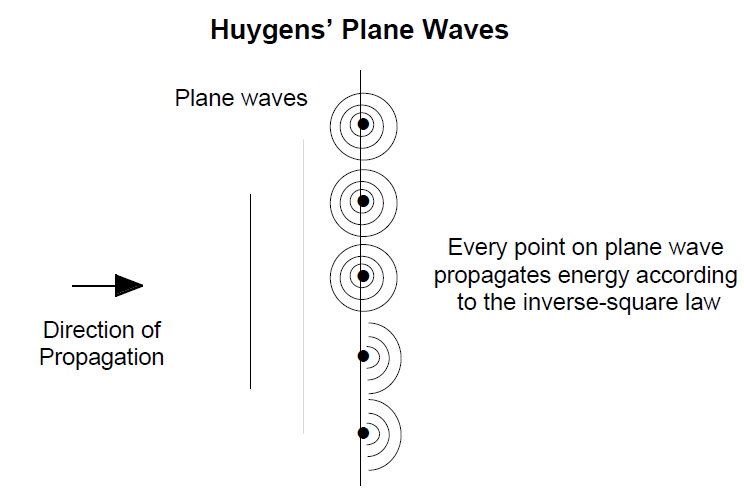
For an infinite plane wave, the sideways propagation from each point is balanced by the propagation from its neighbors, so the wave continues on as a plane. However, when a wave encounters an object, the effect at the edges of the object is that the path of the radiation is slightly bent.
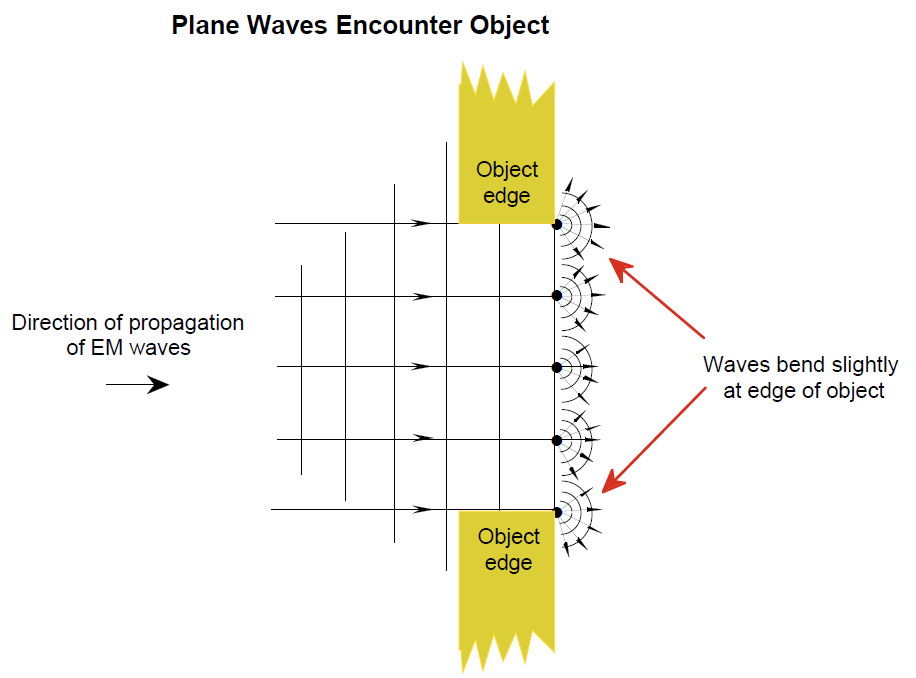
Now suppose the radiation (for example, light) is then intercepted by a surface (such as a screen) a short distance from the object. Then, compared to the parallel waves that have passed farther from the object’s edge (for example “waves B, C, and D” in the illustration below), the waves that have bent around the edges of the object (“waves A and E” for example) will have travelled a shorter or longer distance from the object to any given point on the screen.
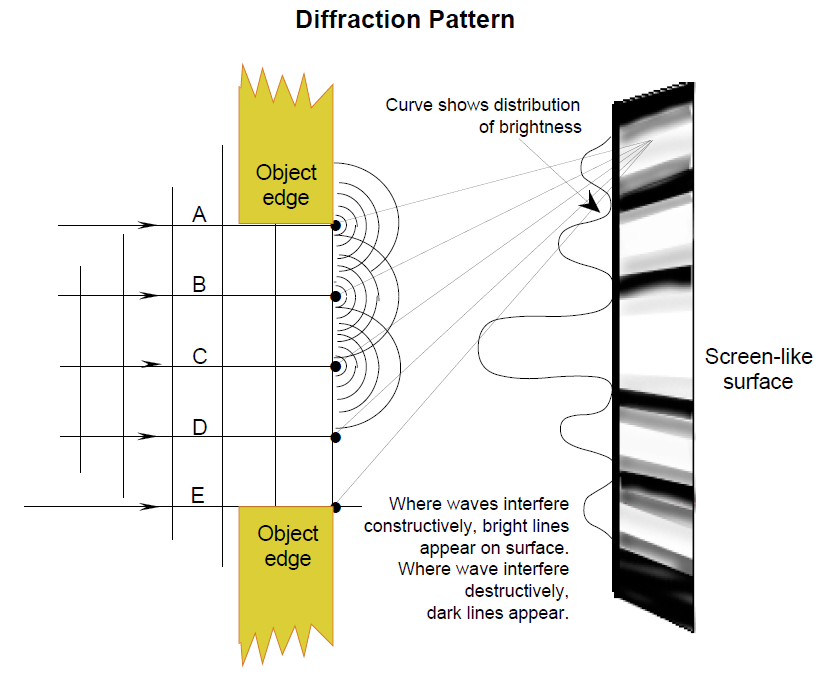
The effect is that the light waves are out of phase when they arrive at any given point on the surface. If they are 180° out of phase, they cancel each other out (destructive interference) and produce a dark line. If they are in phase, they add together (constructive interference) and produce a bright line. Diffraction is most noticeable when an electromagnetic wave passing around an obstacle or through an opening in an obstacle (such as the slit between your fingers) is all of the same frequency, or monochromatic.
The picture below shows a typical diffraction pattern seen when observing a star through a telescope with a lens that focuses the light to a point (a converging lens).
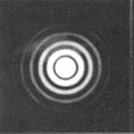
Both optical and radio telescopes must take diffraction into account. In the case of radio telescopes, the observed wavelengths are quite long, thus creating very wide diffraction patterns, which can significantly detract from the resolution of the image. Thus more overlap and more separation are needed to resolve the image. Larger antennas and interferometric arrays are ways of dealing with loss of resolution due to diffraction.


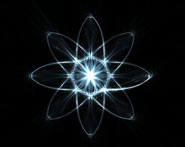
|
|
|
|
لشعر لامع وكثيف وصحي.. وصفة تكشف "سرا آسيويا" قديما
|
|
|
|
|
|
|
كيفية الحفاظ على فرامل السيارة لضمان الأمان المثالي
|
|
|
|
|
|
|
شعبة مدارس الكفيل: مخيَّم بنات العقيدة يعزِّز القيم الدينية وينمِّي مهارات اتخاذ القرار لدى المتطوِّعات
|
|
|